Now Restocked: Fruit Trees
We’ve restocked our fruit tree selection for the last time this season! Stop in or shop online to reserve your favorite. Plant now and enjoy beautiful blooms next Spring!
We’ve restocked our fruit tree selection for the last time this season! Stop in or shop online to reserve your favorite. Plant now and enjoy beautiful blooms next Spring!
It’s a great time to load up on perennial peonies! The Spring favorite is in bud and bloom in our perennial yards now. This season, we’re carrying an incredible selection of varieties to adorn your garden. We have tried and true favorites as well has hard to find varieties, you’ll want to collect them all!
Peonies are garden classics and have been growing in Eastern gardens for 4,000 years. It was used as the Imperial symbol in China and slowly migrated to Japan around the 8th century. Ancient Greek mythology highly regarded the peony for its medicinal purposes, as did the Christians in Europe during the Middle Ages.
Peony derives its name from a Greek myth. Paeon, a student of Aesculapis (God of Medicine), was well aware of the medicinal qualities of peony plants. He used them to heal a wound suffered by the god Pluto which so infuriated Aesculapis he threatened to kill Paeon. Pluto saved Paeons life by turning him into a peony. Another myth replaces Pluto with Zeus.
There are a few myths about peonies and my favorite is about the “nymph” named Paeonia. She was so beautiful that she attracted the attention of Apollo. This did not sit well with Aphrodite, she was so jealous she turned Paeonia into a flower.
There are 3 classifications for peonies, herbaceous, tree and intersectional. All are hardy to zone 3, drought tolerant, deer resistant and low maintenance. There are many varieties to choose from and can be used in the landscape as a specimen, mass planted as a hedge, or in a container on the patio. They do not like to be planted to deep and will last for years with minimal care.
HERBACEOUS – These are the ones that die back to the ground every year. They will grow 3 to 4 feet high and wide and have lush, glossy, green foliage. The flowers come in a range of colors from shades of red, pink, purple and white. Blooms range in size and fullness, from single petal to fully double blooms. Japanese varieties have 1 to 2 layers of petals that surround a cluster of partially formed petals in the center (petaloid stamens). There are many that are fragrant, from a mild scent to a heavy fragrance.
TREE – This variety has a woody stem that stays throughout the winter. Tree peonies can grow 5 feet tall or more but are slow growers. So, it is quite possible your plant will remain small for several years. The flowers are larger than herbaceous peonies and the color range is red, pink, coral, yellow, and purple to bi-colors. Some are fragrant but not as much as herbaceous. They will thrive in dappled shade with only 4 to 5 hours of sun and bloom 2 weeks earlier than herbaceous ones. Although they lose their leaves in winter the woody stems maintain a graceful structure for the season.
INTERSECTIONAL – Also know as ITOH peonies originated by crossing a tree with a herbaceous peony. This was done by Japanese botanist Dr. Tochi Itoh in 1948. Sadly Dr. Itoh died before the seedlings were able to flower. It was up to his family to continue and nurture them until they finally bloomed in 1964. An American botanist, Louis Smirnow, was finally able to get permission to bring some plants to the USA where he patented 4 hybrids and named them ITOH hybrids.
ITOH’S grow up to 3 feet tall and wide. The lush finely divided leaves grow close to the ground giving it an elegant mounded look throughout the season. The have enormous flowers with fluffy petals that surround a cluster of yellow stamens. ITOH’S come in a range of colors including red, apricot, coral, pink and yellow. Just as herbaceous peonies start to fade the ITOH’S burst on to the stage, extending the peony season another 2 to 3 weeks. It is similar to herbaceous as it dies back for the winter and the flowers are large like the tree peonies.
There is a peony for every garden, whether it is used as a specimen, hedge, container or just added to the perennial border. Place fragrant varieties close to home where their scent can be enjoyed. Float a flower in a bowl, cut a bouquet and enjoy these beauties for years to come.
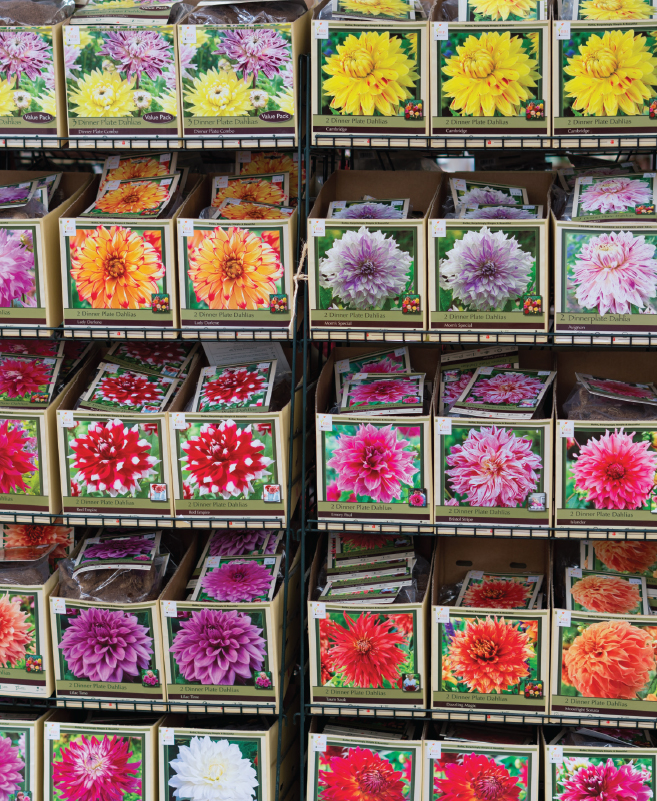 Our summer-flowering bulbs are here! Plant in the Spring for gorgeous blooms in the summer. Shop early for best selection of dahlias, begonias, lilies, elephant ears and more! Visit us in-store for our full collection or
Our summer-flowering bulbs are here! Plant in the Spring for gorgeous blooms in the summer. Shop early for best selection of dahlias, begonias, lilies, elephant ears and more! Visit us in-store for our full collection or
When you think lawn seeding, spring may be the first thing that comes to mind. But the warm soil temperatures and cool nights of late summer and early fall actually mean now’s the best time to seed your lawn! Planting now without the stress of summer heat means your lawn seed has enough time to establish before the winter’s first frost. Here’s a checklist of our favorite products to help you renovate the lawn with seed

 So, how much soil do you need? Well that depends on your conditions. Keep in mind here that your turf success is really just a result of your soil quality. The stronger your root system is in deep, healthy soil- the better your new seed will perform. I put down up to 10 inches of compost and loam when I redid my back yard and it shows in times of summer drought. This summer, my lawn stayed green while others dried out. It is deeply rooted and healthy enough to withstand stressful conditions. Use a quality top soil or compost to amend your existing conditions. If your soil is of good quality, just till and loosen the top couple inches and rake out a good grade.
So, how much soil do you need? Well that depends on your conditions. Keep in mind here that your turf success is really just a result of your soil quality. The stronger your root system is in deep, healthy soil- the better your new seed will perform. I put down up to 10 inches of compost and loam when I redid my back yard and it shows in times of summer drought. This summer, my lawn stayed green while others dried out. It is deeply rooted and healthy enough to withstand stressful conditions. Use a quality top soil or compost to amend your existing conditions. If your soil is of good quality, just till and loosen the top couple inches and rake out a good grade.
One other great product that I always recommend is Jonathan Green’s, Love Your Soil. It’s a cool organic product that stimulates microbes in the soil and helps to loosen heavy, hard packed soils, to release trapped nutrients. It’s a good preparation amendment so your soil can better stimulate root growth for your new seeding.
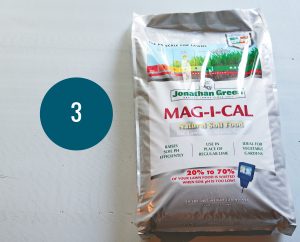 If there’s ever a time to test your soil- it’s now. Even if you are only testing the pH. You can get an extensive test through our own lawn-care service, Safe Lawns, or the UMass Extension (for a fee). Or you can do a basic, at-home test yourself.
If there’s ever a time to test your soil- it’s now. Even if you are only testing the pH. You can get an extensive test through our own lawn-care service, Safe Lawns, or the UMass Extension (for a fee). Or you can do a basic, at-home test yourself.The soil test will tell you your lawns pH, nutrients and soil structure. I find the most important right now is to test pH levels. You see, if your soil has a low pH– your fertilizers won’t work as well. The best way to explain this is if your soil is too acidic you can’t derive the iron and magnesium naturally occurring in your soil so your lawn will never get to that dark green color everyone wants. To adjust your pH into the desired neutral area, add Jonathan Green’s MAGI-I-CAL or lime.
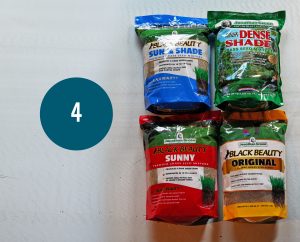 Your grass seed is more important than most people think. Cheap grass seed is just that, cheap and we can’t in good faith carry it. You see, varieties of grass seed get old and are replaced as better seeds become available. This makes the older seed cheaper than the newer, better performing ones. Another way to get cheap seed is to add annual blue grass to the mix. Annual blue grass is an inexpensive filler, but it doesn’t come back the next year making it a turf that comes up well initially, but then your lawn comes in very thin next spring. Cheap grass seed is like a cheap beer only that headache you get is going to last for years.
Your grass seed is more important than most people think. Cheap grass seed is just that, cheap and we can’t in good faith carry it. You see, varieties of grass seed get old and are replaced as better seeds become available. This makes the older seed cheaper than the newer, better performing ones. Another way to get cheap seed is to add annual blue grass to the mix. Annual blue grass is an inexpensive filler, but it doesn’t come back the next year making it a turf that comes up well initially, but then your lawn comes in very thin next spring. Cheap grass seed is like a cheap beer only that headache you get is going to last for years.
It’s also important to pick the right seed for your sun requirements. You don’t want to take a full sun blend and put it in the heavy shade areas. Use the right seed for the right sun. Jonathan Greens dense shade will do great under those trees down to about 3 hours of sun. Don’t forget grass seed does need about 3 hrs of sun to grow or it will just slowly fade away. Sometimes shrubs and perennials do better for those heavy shade areas.
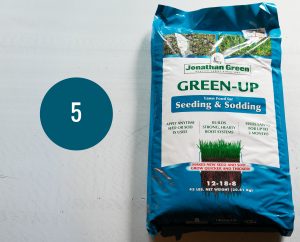 es fertilizer. It makes a huge difference and it seems like everyone wants to either skip this step or add it later. Whether organic or synthetic, add fertilizer when you seed.
es fertilizer. It makes a huge difference and it seems like everyone wants to either skip this step or add it later. Whether organic or synthetic, add fertilizer when you seed.Fertilizers are meant to release phosphorus into the soil at time of germination and then add nitrogen in a slow release fashion thereafter to continue feeding. Don’t mix seed and fertilizer. It doesn’t matter which one goes first or second but add one and then put the other down and water.
The rest is up to you! Be sure to keep your new seed evenly moist in the beginning because if you let grass seed dry out too much, it may prolong the germination or even worse– kill the seed during germination. This first week is very important, after that you can back down to a deep water every 2- 4 days depending on the weather forecast.
.
info from Hummingbird Central
Hummingbirds spend the winter in Central America or Mexico, and migrate north to their breeding grounds in the southern U.S. and western states as early as February, and to areas further north later in the spring. This is usually around the end of April for New England. The first arrivals in spring are usually males. Some, however, do not migrate, in areas like California and the upper Pacific coast.
Although there are differing views in the birding community as to what triggers the start of migration, it is generally thought that hummingbirds sense changes in daylight duration, and changes in the abundance of flowers, nectar and insects. Instinct also plays a role in making the decision to migrate.
During migration, a hummingbird’s heart beats up to 1,260 times a minute, and its wings flap 15 to 80 times a second. To support this high energy level, a hummingbird will typically gain 25-40% of their body weight before they start migration in order to make the long trek over land, and water.
They fly alone, often on the same path they have flown earlier in their life, and fly low, just above tree tops or water. Young hummingbirds must navigate without parental guidance.
Hummingbirds fly by day when nectar sources such as flowers are more abundant. Flying low allows the birds to see, and stop at, food supplies along the way. They are also experts at using tail winds to help reach their destination faster and by consuming less energy and body fat. Research indicates a hummingbird can travel as much as 23 miles in one day.
With sightings in New England already, it’s an important time to make sure your yard is ready to feed the migrating hummingbirds. Stops along the way may be for a few minutes, or a few days at more favorable locations with abundant food supplies. Feeding hummingbirds is an easy, rewarding and inexpensive experience. All you need is a feeder, table sugar and water. We have a variety of feeders specifically designed for hummingbirds that allows easy access, easy filling and easy cleaning. Feeders are usually bright in color to make spotting them from afar easy! Place the feeder in a shady spot so the nectar will last longer, out of reach of pets or other critters. Remember, hummingbirds will not feed if ants, bees or other insects are feeding from. This is why it is imperative to use a feeder specifically designed for hummingbirds. We sell hummingbird feeders that make it difficult for pests like ants to find the nectar. The best placement is in front of a window so you can catch a glimpse of the hummingbirds from inside!
Unlike other birds, hummingbirds feed on nectar, not seed. In nature, they eat flower nectar of energy and insects for protein. They are naturally attracted by a number of flowering plants that allow easy access to the nectar. In early Spring where flowering plants are less available, feeders provide the nutrition hummingbirds require along their migration paths. We sell prepared nectar, or you can do it yourself at home!
<iframe src=”https://www.google.com/maps/d/embed?mid=1w0lSxgG5eT0iOthtJfebp-uhk2n0oqRf” width=”640″ height=”480″></iframe>
When the winter season comes knocking on your door, you have to find a way to safely get rid of that snow and ice on your driveway and walkways around your house. One of the most effective options is an ice melting product. But which one? There are hundreds of different ice melt products on the market today, all claiming a unique blend of ingredients to melt that pesky ice away more effectively. So which product is right for you?
For those looking to save money, pure rock salt (sodium chloride) will provide effective results at a fraction of the cost. This solution will work when the temperature remains above 20 degrees which, in New England, means it’s only effective in November when temperatures hover around 30 degrees.
When temperatures begin to dip below 25 degrees, we recommend a calcium chloride based ice melt. This particular blend will melt nearly three times more ice and snow than traditional sodium blends without the harsh effects on your lawn or driveway. Calcium chloride based blends are more effective and are a safer alternative for you plants and concrete walkways.
Have pets or small children? We recommend a magnesium chloride blend which offers effective ice melting while protecting your pets and children. This pet-friendly blend will work when temperatures drop below 15 degrees without damaging your award-winning roses. Your pets and plants will thank you for using a magnesium based blend.
As with all chemical products, follow the manufacturer’s instructions on use and keep unused ice melt away from pets and children—even the pet-friendly blends. Before applying any ice melt product, be sure to remove as much snow as possible from the applied area.
So whatever your ice melt needs may be, Mahoney’s won’t leave you out in the cold. Stop by Mahoney’s and a team member will help you choose which product is right for you.
There are many ways to keep color in the garden even after the glorious days and exuberant flowering display of June. Like late-blooming teenagers, there are plants that come into their own after others have made their statement. They extend the joy of being in the garden into July, August and September, offering color and texture. And many late season bloomers are also magnets for pollinators such as butterflies and bees. Here are some perennials and shrubs that are worthy garden contributors later in the season.
Anemone hupehensis (Wandflower): The flowers of this perennial are suspended well above a tidy mound of rich green foliage. They wave in the wind and when backlit by the sun, make a beautiful scene. ‘September Charm’ has rose-pink flowers with yellow centers. ‘Honorine Jobert’ has ethereal white flowers.
Aster divaricatus (Wood Aster): The delicate, airy clouds of wood aster begin to bloom in late summer. Small, daisy-like flowers with yellow to red centers are carried above dark green to black stems. It grows 1.5-2.5’ tall in filtered to full shade. It is available in white, pink or purple varieties. Native to the open woods of the eastern United States, it is attractive to butterflies.
Aster novae-angliae (New England Aster): The rich colors of this aster range from blue-purple to lavender-pink, with yellow-orange centers. The blooms are large and showy. They provide a critical fall nectar source for pollinators, especially Monarch butterflies as they stock up for their fall migration to Mexico.
Ceratostigma plumbaginoides (Blue Plumbago): This is a beautiful spreading, low-growing groundcover that reaches just 8-12” in height. What a treat when deep blue flowers appear in late summer! And as fall approaches, its shiny green foliage turns a beautiful bronze-red color.

^^ Coreopsis grandiflora (Large Flowered Tickseed): Count on any of the Coreopsis varieties to provide warm yellow tones to the garden. There are many varieties available, all offering daisy-like flowers. They are deer resistant and attractive to pollinators. They offer a long period of bloom, beginning in midsummer and extending into the fall.
Coreopsis verticillata (Thread Leaf Coreopsis): This type of coreopsis has delicate leaves and stems and bears loads of flowers. Many varieties are available. ‘Moonbeam’ has flowers the color of chilled butter. ‘Mercury Rising’ has velvety red flowers with a bright yellow center.

^^ Echinacea (Coneflower): One of the most iconic plants in a late summer New England garden is the purple coneflower with its showy 5” daisy-like pink flowers. It blooms throughout summer on upright stems and typically grows 2-4′ tall. If left standing into the winter, the cones in the center of the flowers will be a food source for birds. Plant breeders now offer us additional color and size choices like yellow and white.
Eupatorium (Joe Pye Weed): Native to the eastern United States, this plant makes a statement in the garden. Its reddish purple flowers form large, showy heads on 5-6 foot, wine-colored stems. Flowering begins in late August, but the stems and buds are ornamental well before then. Butterflies love it.
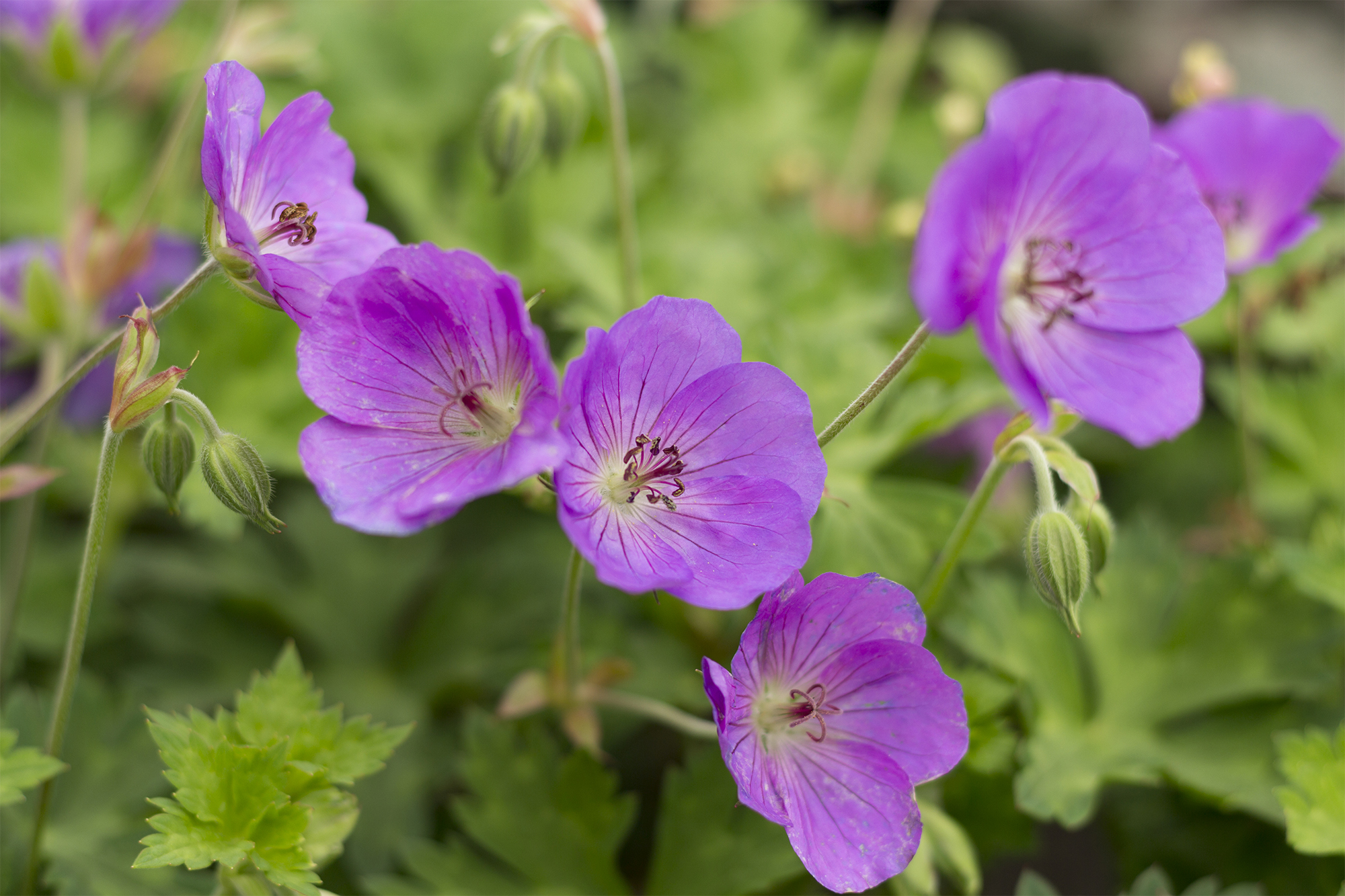
^^ Geranium ‘Rozanne’: This hardy geranium was named Perennial Plant of the Year in 2008 – and for good reason. It is one of the longest blooming perennials. It has violet-blue flowers with a white eye that begin blooming in early June and continue without deadheading until the end of October. The foliage turns a lovely shade of bronze-red in the fall. Growing 18” tall and 2’-3’ wide, it provides color, texture and mass to a garden bed or foundation planting.
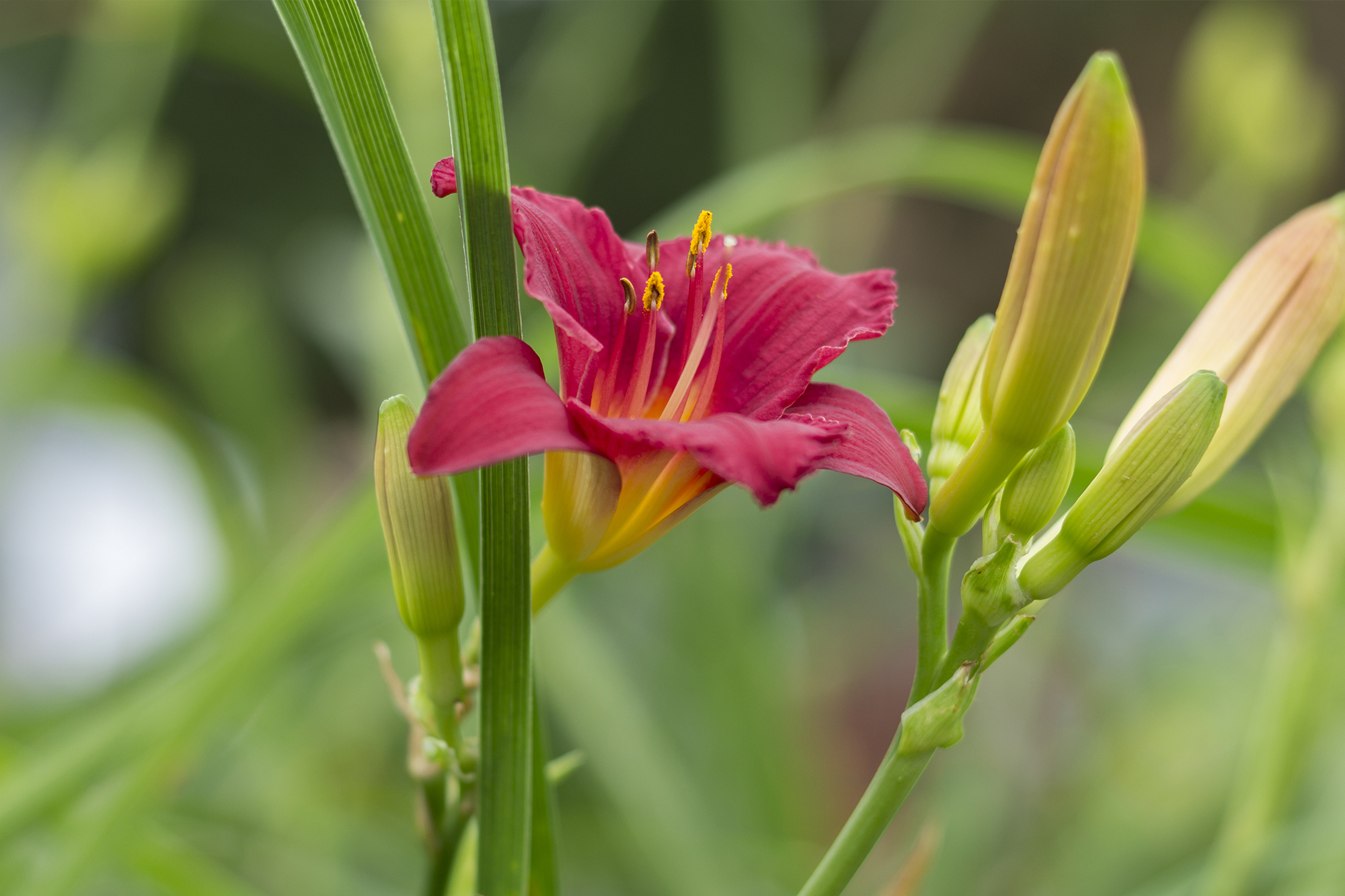
^^ Hemerocallis (Daylilly): There is nothing easier to grow than a daylily. It comes back faithfully every year with gently arching long blades of foliage. In July and August its flowers stand proudly above the foliage. And those flowers are available in a range of colors – yellow, peach, pink, red – with a central eye of contrasting color. There are single flowers, double flowers, and even some flowers whose petals have ruffled edges. A mature clump is a handsome sight.
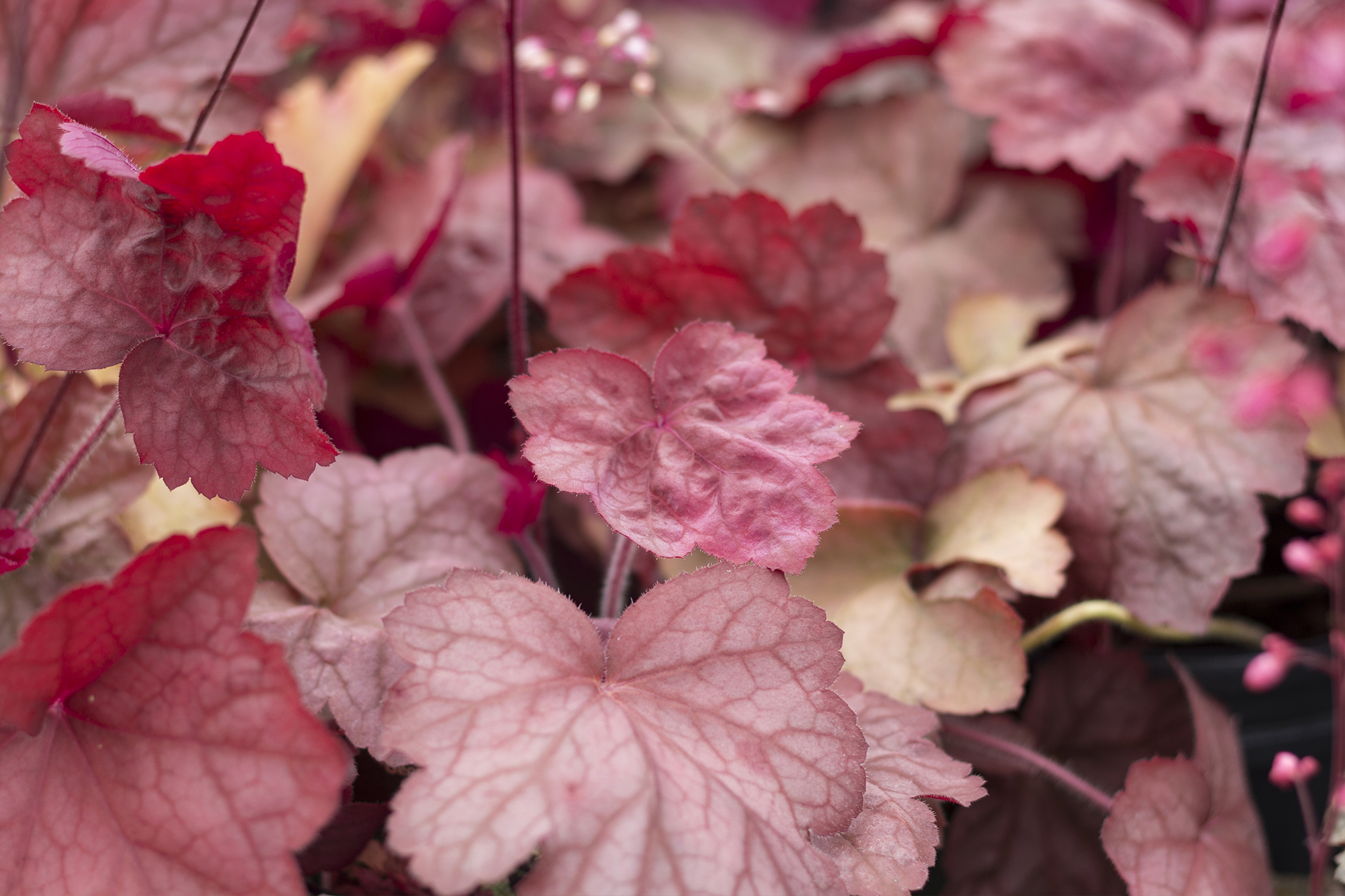
^^ Heuchera and Heucherella: These plants are wonderful colorful additions to a shady area. While they have tiny bell-shaped flowers on wand-like stems, they are more often grown for the season-long color of their leaves. They come in varieties with unusual foliage colors ranging from yellow to caramel to raspberry red to purple and almost black. They are clump forming plants that thrive in partly sunny to shady situations. They enjoy soil that is rich in organic matter.
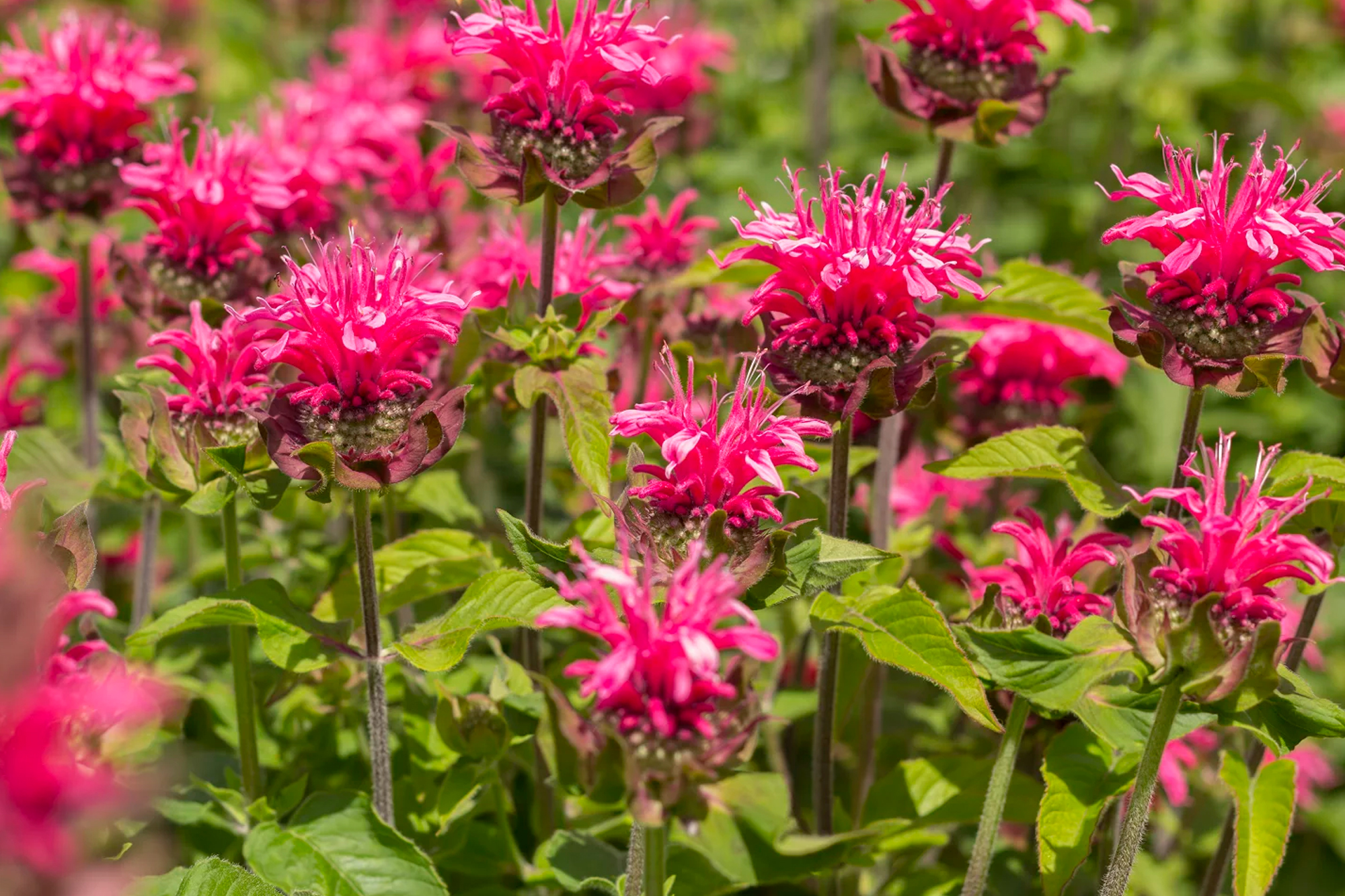
^^ Monarda (Beebalm): Monarda is a long-time favorite in the perennial border. Plant breeders have introduced many new varieties that offer new colors, sizes and improved mildew resistance. Plants have sturdy stems and with time will create a nice mass in the perennial border. Showy flowers are complex in their structure and attract all manner of pollinators. And did we mention it is deer resistant?
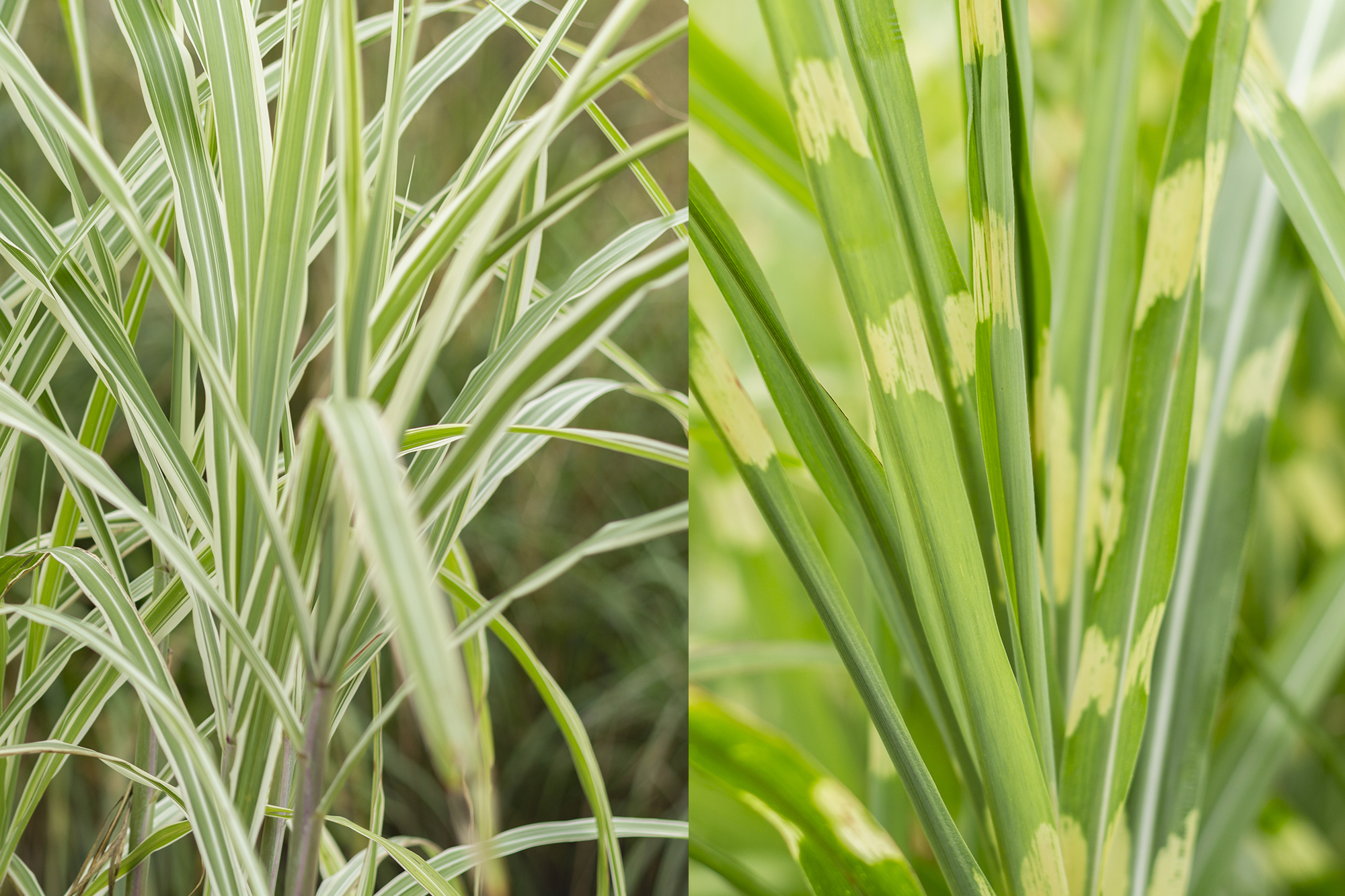
^^ Ornamental Grasses: This large family of beautiful perennial plants adds texture, color and movement to the garden. They also provide interest in the fall and winter landscape, especially when backlit by morning or afternoon sun. When the flowers of summer are only a memory, you’ll find delight looking out on frosted ornamental grass spikes in the early light of a cold winter’s day. Cut back to the ground in early spring.
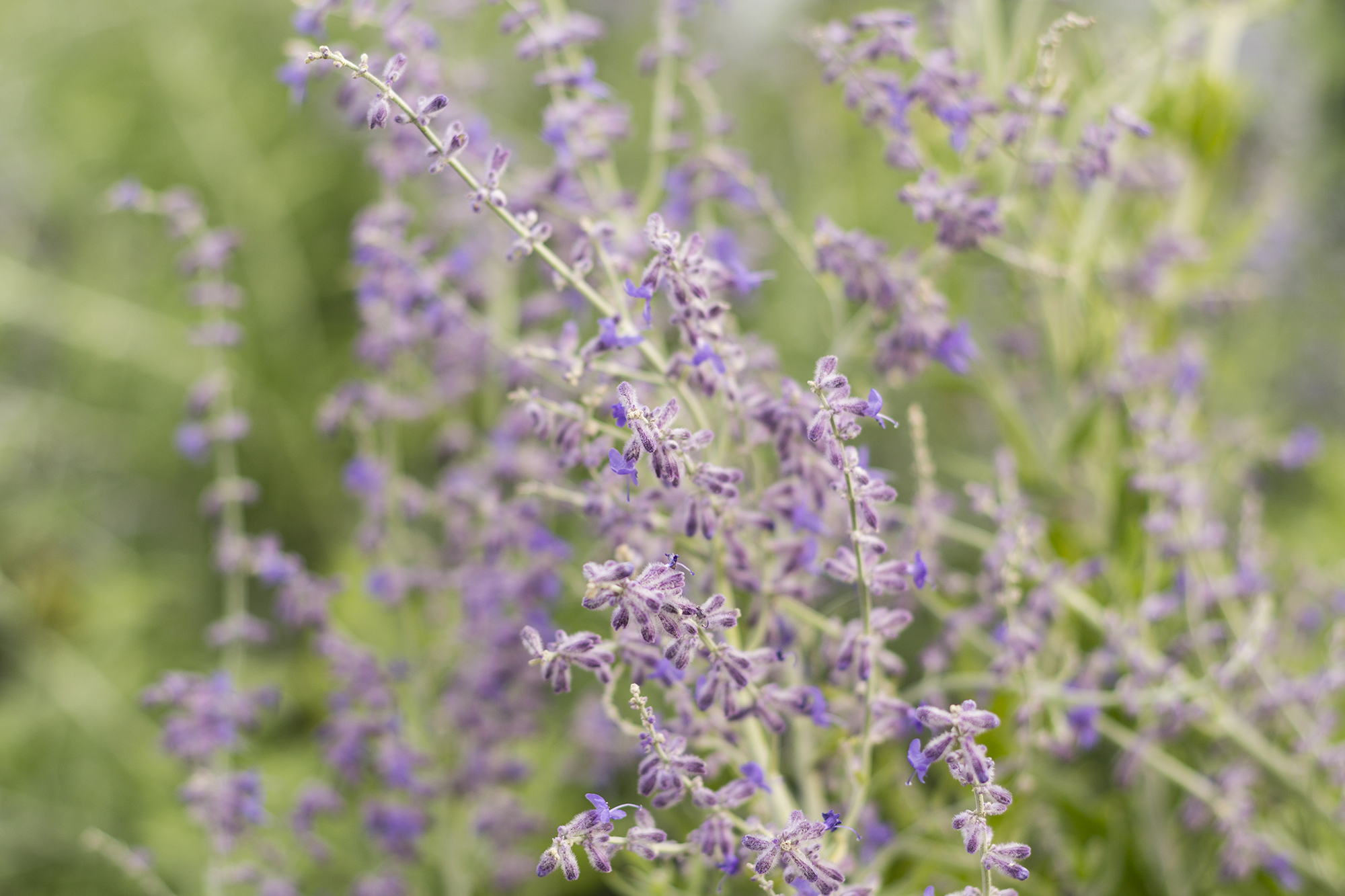
^^Perovskia atriplicifolia (Russian Sage): This is a lovely shrubby, aromatic perennial with finely dissected silver-green leaves. Interestingly, the plant’s stems are square. It becomes even more interesting in late summer through autumn when tubular pale blue flowers open. When planted in full sun its stems have a nice, upright posture and grow to a height of 3-4’. New varieties are available that have a more compact habit, growing to 2’ in height. Cut the plant back almost to the ground in late winter or very early spring. The whole effect is of a delicate, airy plant that complements everything around it. Perovskia atriplicifolia was named Perennial Plant of the Year in 1995.

^^ Phlox paniculata (Garden Phlox): This upright perennial is a classic in the perennial border. It grows in a clump 2-4’ tall and 2’ wide. Its pointed green leaves are held on sturdy, upright stems. But the reason it is so beloved has to do with its fragrant, densely packed, tiered flower clusters that hold court from July into September. A large number of varieties are available in colors including, white, lavender, pink and red, and today’s varieties are resistant to powdery mildew which troubled older varieties. ‘David’ is a beautiful white variety which glows in the evening light. ‘Bright Eyes’ has lovely pink flowers with a ruby colored center. While you are enjoying the flowers, don’t be surprised to see the butterflies and even hummingbirds doing so as well!
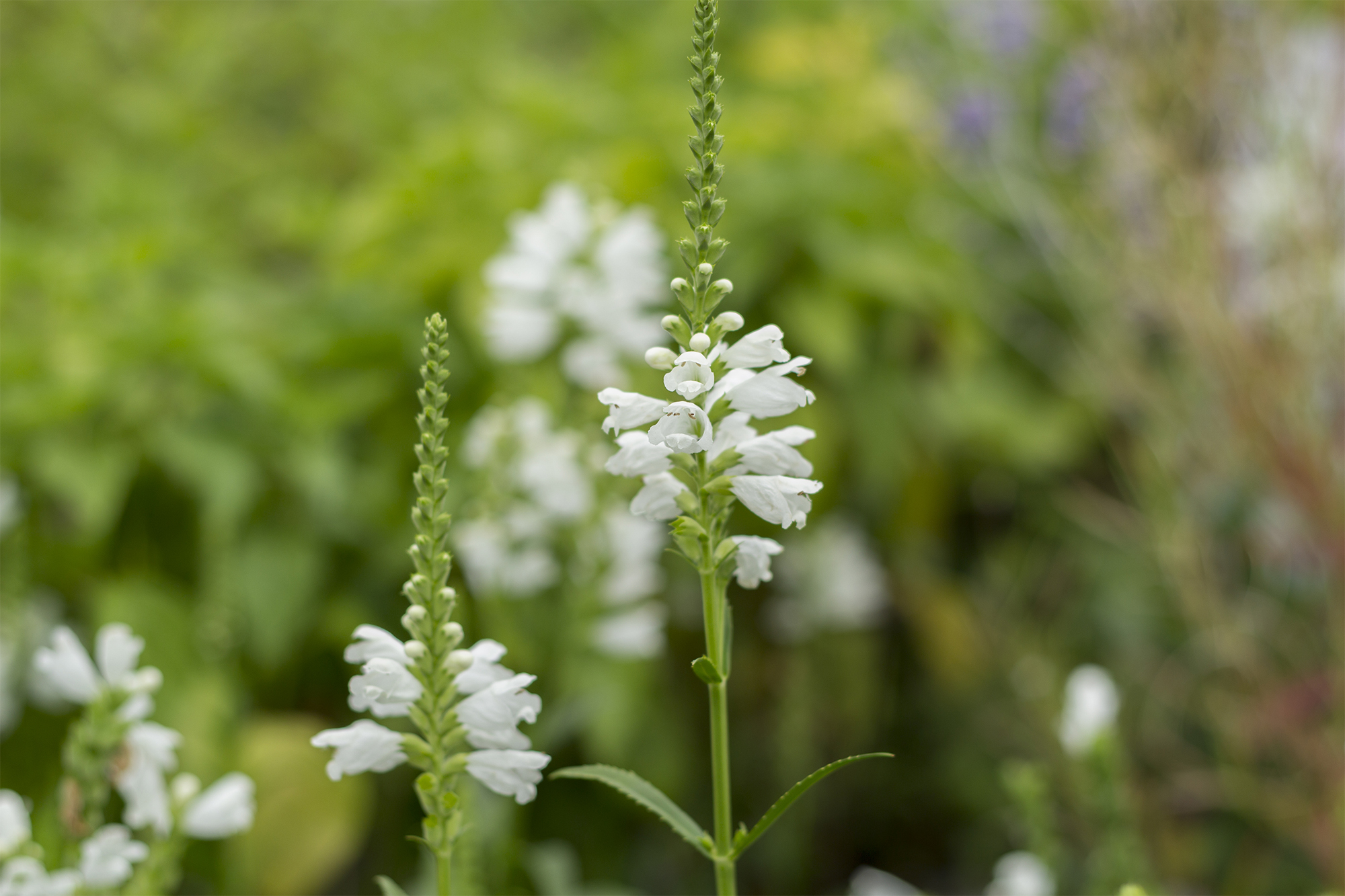
^^ Physostegia virginiana (Obedient Plant): You may be familiar with the lavender flowers of Physostegia virginiana. While it may have a tendency to grow beyond its bounds, ‘Miss Manners’ forms a clump of well-behaved deep green foliage topped with fresh white flowers. It grows to a height of 18-24” and a similar spread. It adds a crisp and refreshing late-season element to the perennial border.

^^ Rudbeckia fulgida (Black Eyed Susan): One of the most frequently planted Rudbeckia is a variety called ‘Goldsturm’. It has showy dark golden-yellow flowers with black centers, and bloooms from July into mid-October. Growing 24” tall, it tolerates a wide range of conditions and if happy, will multiply readily. It was named Perennial Plant of the Year in 1999. It happens to be a favorite of goldfinches who love its seeds.
Rudbeckia nitida ‘Herbstsonne’: This is a taller growing Rudbeckia that looks fabulous at the back of the perennial border. Slender branching stems hold bright green, toothed leaves. It has bright yellow daisylike flower petals that bend down from a large green cone. Despite its height of 4-6’, it needs no staking. If left to stand for the winter, it is a good food source for birds.

^^ Sedum (Stonecrop): Whether in groundcover form or taller upright versions, every garden should have some Sedum. Perhaps most familiar is the 24” tall ‘Autumn Joy’ with its blue-green foliage and large heads of delicate bright-pink flowers that age into a beautiful copper color as fall approaches. Similar varieties include ‘Brilliant’ which has hot pink flowers, and ‘Autumn Fire’ whose flowers deepen to bronze-red. These easy and reliable plants pair well with ornamental grasses, asters and many other perennials. Also of great use in the landscape are low growing sedums which can serve as decorative ground covers, and fill crevices in rock walls or spaces between stones in a pathway. Their leaves come in a variety of colors and shapes, and their flowers are often vivid tones of yellow, pink or red.

^^ Buddleia (Butterfly Bush): The colorful and fragrant flowers attract flocks of butterflies and hummingbirds. But fortunately, not deer! Arching branches bear long panicles of sweet smelling flowers in late summer. Pink, white, or purple flowered varieties are available. Whether you choose a variety that will grow 5 or more feet tall, or a more compact variety, these shrubs should be pruned back hard in spring.
Caryopteris (Bluebeard or Blue Mist): This small shrub is adored by butterflies, bees and other beneficial insects. The entire plant will quiver with their activity! The feathery blue flower clusters cover the plant in late summer and into the fall. Its silvery grey foliage is pleasantly aromatic when brushed by your hand. It should be hard pruned in early spring in order to encourage strong new growth. It will easily grow 2-3’ high in a season.
Clethra alnifolia (Summersweet): One of our native shrubs, Clethra is prized for its fragrant late summer flowers (hence its common name, Summersweet) and glossy green foliage which turns a beautiful yellow in the fall. A magnet for butterflies, it grows in full sun or part shade and will tolerate a damp site. ‘Ruby Spice’ grows 4-6’ in height and has deep reddish-pink flowers. ‘Hummingbird’ has a more dwarf, mounded habit. It grows to 3’ in height and bears white flowers.
Hibiscus syriacus (Rose of Sharon): It is hard to resist the brightly colored, exotic looking flowers of this hardy, deer resistant shrub. Flowers can be single or double and come in white, pink or blue-purple colors. Most varieties grow 8-10’ tall and 6’ wide, but can be pruned in early spring to control size and shape. Some varieties are also available in tree form.

^^ Hydrangea: No garden is complete without Hydrangea. Whether you choose Hydrangea macrophylla with its beautiful blue mop head flowers or its lace cap varieties; Hydrangea paniculata with its color changing cone-shaped flowers; Hydrangea arborescens with its shade-loving white mop head flowers; or Hydrangea serrata whose classic lace cap flowers have showy sterile florets forming an outer ring around the center of tiny fertile florets, you will be grateful for their presence in your garden.
Hypericum (St. John’s Wort): Another deer resistant shrub, Hypericum is a mounding shrub with bluegreen foliage. Growing to 3’ in height and spread, it has bright, golden yellow flowers in midsummer that are loved by butterflies. Flowers are followed by rich red berries that are often used in autumn floral arrangements. It grows in full sun to part shade.
Itea (Sweetspire): This is a lovely deer resistant native shrub that produces loads of long, white flowers that remain attractive through late summer. It is a compact, rounded shrub with gently arching branches. Its bright green leaves have wonderful fall color, turning shades of orange and red. ‘Henry’s Garnet’ grows 4’ tall while ‘Little Henry’ grows just 3’ tall.
Should I apply mulch? How deep? When?
Bulbs don’t require mulch, but it can help to keep the soil moist while maintaining a cool, stable soil temperature. Three inches is plenty (8 cm). Apply when the ground is cool and just before it freezes. If you mulch when the ground is still warm, field mice and other critters might make themselves a warm, winter home and help themselves to some tasty bulb treats.
Should I fertilize bulbs?
Bulbs contain the nutrients they need to bloom their first year, but a fertilizing program will keep plants healthy and ward off diseases and pests. Compost and manure are two good organic fertilizers that improve the soil and ensure a good soil structure for bulbs. Use organic supplements to add nutritional balance. Compound mineral fertilizers can also be applied, but check the label to see if fertilizing is appropriate for your bulbs and the best time of year to do so.
Are there bulbs that scare off mice?
Don’t we wish! While no bulb will ward off mice, voles, moles and other underground pests, there are some easy precautions that can protect your bulbs. One is to plant bulbs deeply enough then cover them properly with soil to deter mice. A second is to create a barrier: simply lay finely meshed netting or chicken wire around the border of the planting then tuck the edges slightly into the soil.
I have seen the same variety of bulb priced very differently, some very cheap and others quite expensive. What’s the difference?
In a word: size. Bulbs from Holland are gauged by “caliber” which is the circumference of the bulb. Since larger bulbs yield larger flowers, they typically cost more. Smaller caliber bulbs are younger and often cost less. For plantings in a front bed or other highly-visible garden setting, it’s worth the higher price for the grander display. If you have a larger area or a portion of yard that’s less visible, smaller caliber bulbs can add color and enliven the scene at lower cost. Left in the ground, these bulbs will naturalize and eventually become bigger bulbs. By the way: the Dutch will not export bulbs below certain established calibers. Tulips, for instance, must be 4 inches (10 cm) or larger without exception. Only naturally sized species tulips fall outside this guideline, but no other tulip bulb smaller than 4 inches (10 cm) will be exported from Holland.
How soon should I plant my bulbs after I buy them?
Typically, it’s best to get them in the ground as soon as possible after bringing them home. If you must wait, store bulbs in a cool, dry place away from direct sunlight. You don’t want to wait too long since bulbs need ample time in autumn to develop roots. So dig and drop six weeks or so prior to hard ground frosts and you’ll be done in plenty of time for spring blooms. Bulbs have one mission in life and that’s to grow, so even if you dig and drop when the ground is already hard and chilled, be sure to water (though not when it will freeze) and bulbs will begin their root growth cycle. They aim to please!
Why are tulips grown in Holland of all places?
Three reasons: the climate, the coast and Carolus Clusius, who introduced tulips to Holland in the 16th century. At the time, the Netherlands was a leading center of trade. As tulip fascination caught on, the Dutch began cultivating them more professionally. Add to this a marine climate (mild winters, cool summers) and a particularly well-suited strip of land just inside the Dutch dunes (proper soil with good drainage, consistent water levels) and the global bulb trade was born. Today, expanses of land in the northern regions of the Netherlands are where the action happens and where the millions of the bulbs we know and love today have their ancestral home.
How do I keep squirrels and deer from digging up my bulbs and destroying my garden?
These furry foragers aren’t so cute after nibbling their way through a bulb garden, are they? Unfortunately, there’s no easy answer to these relentless and challenging pests. While daffodils and other narcissi bulbs taste awful to them, their champagne tastes can wreak havoc on plantings of tulips and crocus. A bottled repellent is a good idea, like Bonide’s Repels-All. A favorite Dutch remedy is to interplant Fritillaria imperialis, a tall, dramatic plant that squirrels (and reportedly deer) think smells like skunky gym socks. One sure-fire line of defense is to lay wire mesh such as chicken wire on top of the bed. Squirrels can’t dig through it and the flowers will find their way through the holes. A starving deer will eat just about anything, and the loosened soil after planting in autumn makes bulbs particularly vulnerable to industrious squirrels. So don’t advertise your plantings by leaving debris like papery bulb tunics or scented bits from the bulb bags at the site.
Can I plant flower bulbs amongst trees and shrubs?
Trees, shrubs and bulbs are all competing for nutrients in the soil, so flower bulbs planted in these locations need to be able to hold their own. It can be a good idea to choose early-flowering bulbs for these sites since they’ll stand out among the still bare woody plants. A mixture of at least six varieties of naturalizing bulbs that flower at successive times is perfect here. Plant them in variously sized clusters in the lightest spots in a wooded area, or along the edge of a wood. You’ll enjoy years of flowering that becomes increasingly profuse year after year.
Should tulips be deadheaded once the flowers start to fade?
“Deadheading,” a term for breaking off flowers from their stem, has many positive benefits for tulips planted for multiple-year flowering. Deadheading once flowers start to fade prevents the development of seedpods, a process that diverts energy from producing new bulbs to producing seeds. It also prevents petals from falling into the leaf axils and allowing certain fungal diseases (Botrytis) to develop.
What should I do after tulips fade in spring? What about daffodils?
You can leave daffodils (narcissi) as they are, but tulips should be dead-headed after flowers have faded. Simply clip off the faded bloom so they won’t go to seed. Resist the temptation to bunch, tie, braid or cut the leaves as the plant dies back. Photosynthesis is turning the sun’s energy into food and “recharging” the bulb for next spring. You can remove them once the leaves turns brown or six weeks after flowering. In the meantime, you can camouflage fading foilage by interplanting annuals or perennials. Leave room in the bed for these by planting bulbs in large clumps rather than full beds.
Can you plant bulbs in any kind of garden and in every type of soil?
So long as the soil drains well, bulbs will thrive. Which means you should avoid planting them in hollows or low spots or under drain spouts, where water collects or puddles. In soggy soil, most bulbs will rot. Exceptions include echequered fritillary (Fritillaria meleagris), camassia and leucojum.
Why are my daffodils blooming so much later this year than they did the first?
Naturalized bulbs tend to bloom about two weeks later in subsequent years than they did their first year. So keep that in mind when choosing bulbs for “color combos.” If you want to coordinate spring blooms or add new bulbs to an existing planting, don’t forget to factor in the later bloom time.
What’s naturalizing about?
For bulbs indicated as naturalizing bulbs, it simply means that they’re most likely to come up and flower again in future years. Successful naturalizing depends on soil composition, pH levels and drainage. And, of course, the bulb’s specific growing needs. Keep in mind that after bulbs bloom in spring, wait a month or two to allow them to die back completely. This gives the plant the energy it needs to recharge for next year’s bloom.
Why don’t spring flowering bulbs in the ground freeze in the winter?
Mother Nature works in marvelous ways and designed spring-flowering bulbs to withstand winter’s cold. While the soil itself may freeze beyond the planting depth of the bulb, soil temperatures rarely fall below 29º F/-2ºC or 30º/-1ºC F. While these temperatures might freeze the water in the bulbs, it doesn’t harm the actual cells in the bulb. In fact, the cells undergo a biochemical process that insulates the bulb to keep it safe and snug. Also, in the same way humans can stay warm in a “snow cave,” the snow cover, along with a nice layer of mulch over the bulb bed, helps insulate the soil.
How deep do I plant flower bulbs?
In general, plant 3x as deep as the bulb is long (measured from the base of the bulb). Typically 8 inches (20 cm) for big bulbs such as daffodils, tulips and hyacinths and 5 inches (13 cm) for small bulbs like grape hyacinths and crocus. Plant in well-drained soil, cover up, water well and wait for spring. It’s as simple as dig, drop, done! For specific directions on individual varieties, check the packaging the bulbs came in.
If bulbs sprout early during a mid-winter thaw, do I need to protect them? Will the next freeze kill the flowers?
Probably not. Although a hard frost may blight the buds or burn the tips of the leaves, they should still flower. Healthy spring-flowering bulbs know what they can be in for, and a return of extreme cold or even snow doesn’t keep them from doing what’s in their nature.